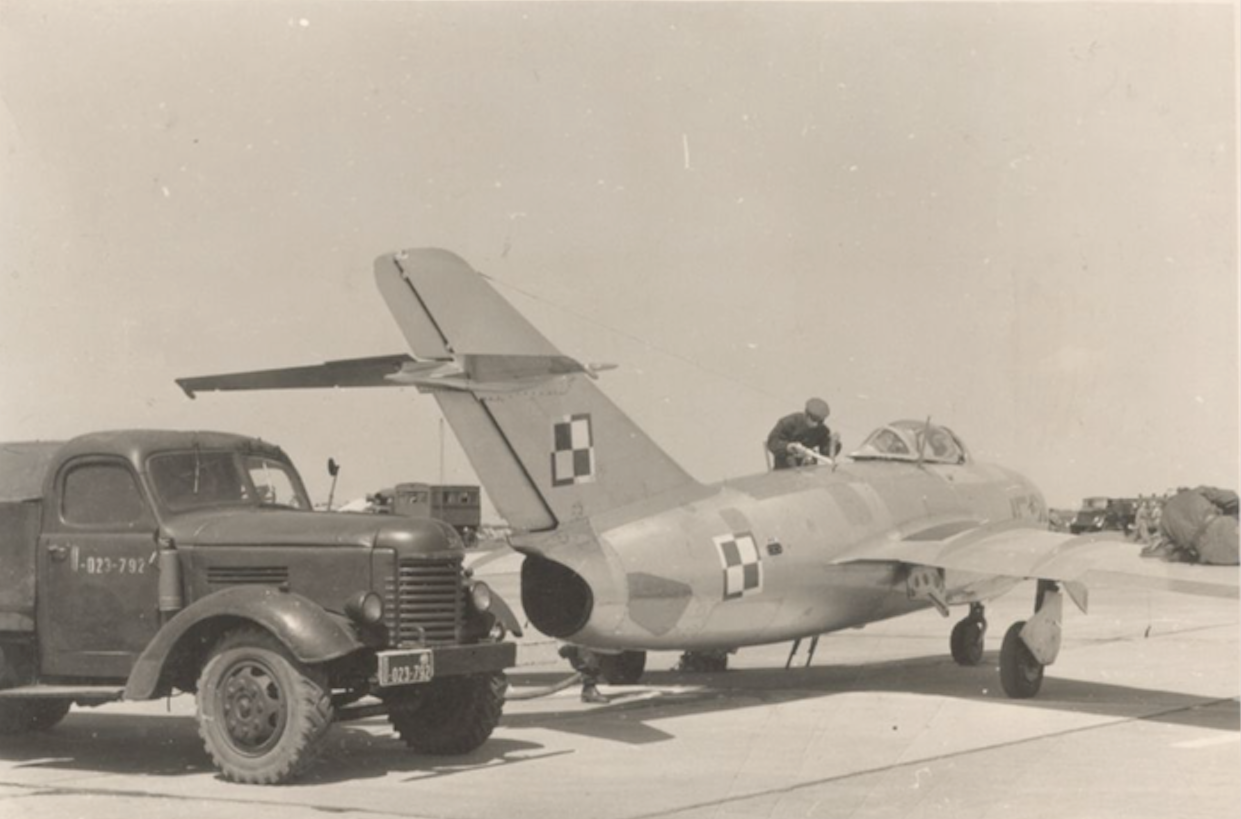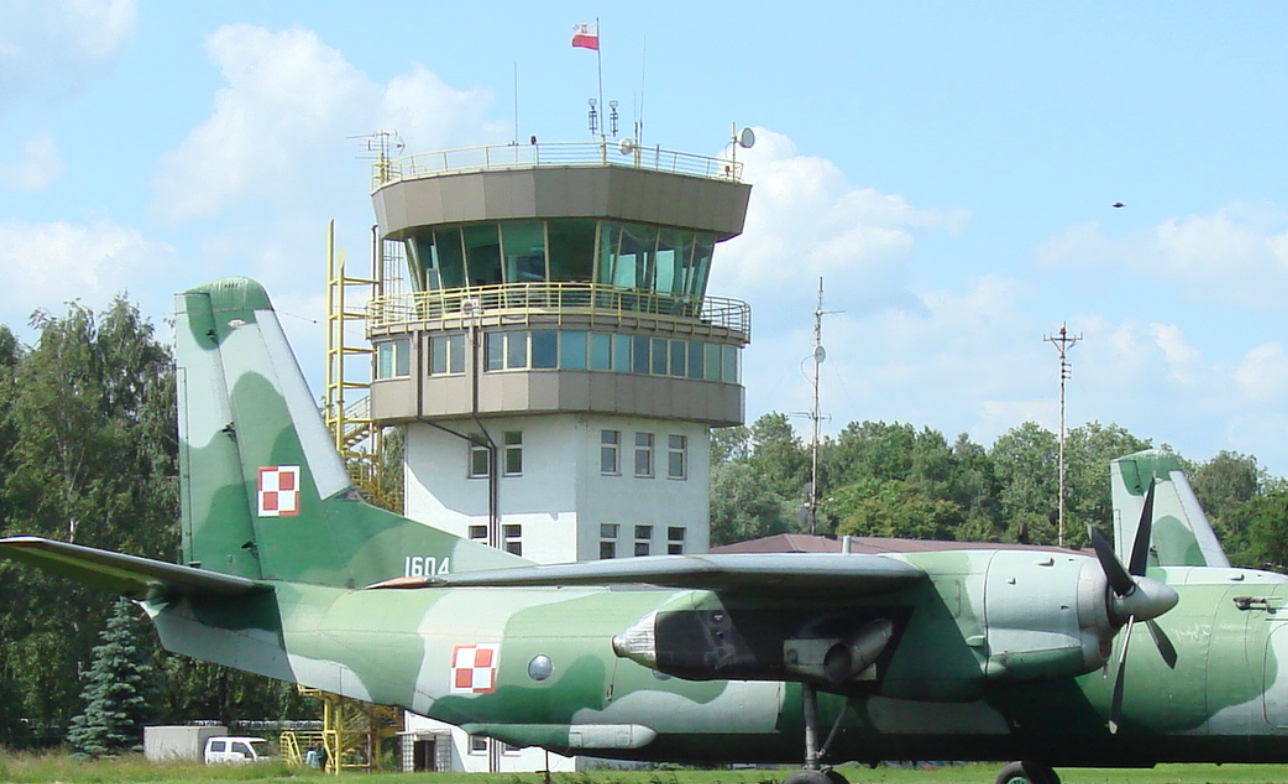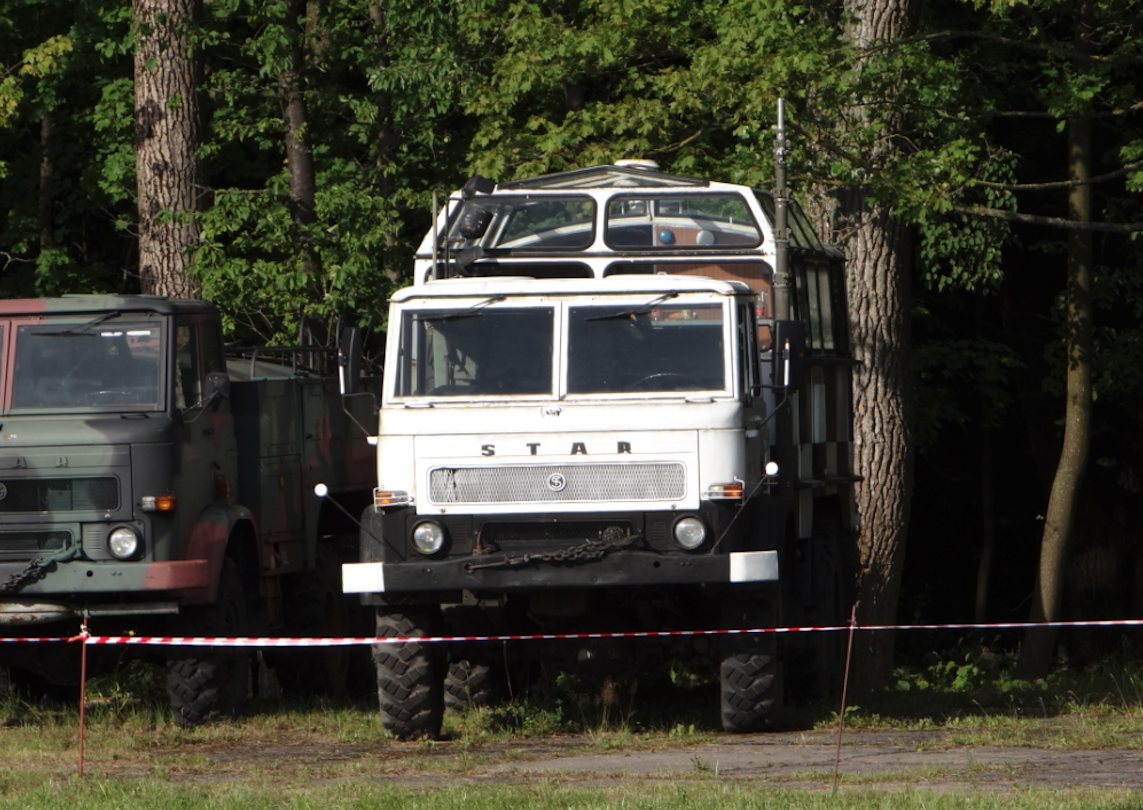Kraków 2007-07-27
Organization of a fighter aviation regiment.

There is no doubt that after the Second World War, the military aviation structure in Poland was created in the CCCP. Although in the second half of the 40s there was a spark of hope for the creation of a completely sovereign Polish aviation. A symptom of this phenomenon was the receipt of aid from the USA in the form of planes from the so-called surplus. The spark went out when, under the influence of "suggestions" from Russian advisers, the planes were scrapped.
The air regiment became the basic combat unit. It had its clear number, just like every military unit in the Polish People’s Army (People’s Army of Poland), e.g. JW. 1541, and a secret number, giving the number of the regiment and its formation, e.g. 4th Fighter and Assault Aviation Regiment. Some of these regiments were given a distinguished name, e.g. 28. Słupsk Fighter Aviation Regiment.
In full-time operation, each air regiment should have 36 combat (training and combat) aircraft. They were part of three squadrons, each grouping 12 planes. Theoretically, each squadron should have the same combat potential. In practice, however, it never was. There were several reasons for this. The basic one was the lack of machines or their inability to fly. So they were in stock, but because of breakdowns, defects, finished resources; were not allowed to fly. Of course, the planes were also inspected in the regiment or repaired (modernized) in repair plants in the country or abroad, which eliminated them from service for that time. The second important reason was the personnel status of the regiment, i.e. the number of properly trained pilots (aviators). The vast majority of them constantly raised their qualifications and was promoted in the hierarchy to higher positions. It is also no secret that each airman preferred to serve in a regiment located closer to a larger city than in the so-called The green garrison, e.g. in Dębrzno. This was the reason for the movement of personnel between the regiments. For these reasons, the 1st Squadron was always the best in each regiment. It always had full personnel and equipment, even in the first period of the regiment’s formation. On the other hand, the 2nd Squadron was weaker in most regiments. This does not mean that she had worse pilots. This was often due to the equipment at her disposal. Usually, these were planes of previous versions or even of the previous generation. An example is the situation when the 1st Squadron was already using modern MiG-21s, and the 2nd Squadron was still flying Lim-5 planes for several years. The 3rd Squadron was definitely the worst. It often functioned more on paper than in the air. Therefore, there was a time in Operational Aviation when the third squadrons were liquidated, while increasing the equipment of the other two squadrons to 18 machines.
Each squadron consisted of three keys, and in each of them there were 4 planes. It was at the key level in the regiments that competition (positive competition) took place, and also outside during exercises or competitions, even within different air formations. There was such a competition between the crews of Ił-28 bombers and Lim-2 fighter planes, although the goals of the flights were different.
Usually, there was one pilot for one combat machine, but there was no rule for assigning the crew to a specific machine. It was a privilege few had. For example, regiment commanders had "their own" planes. They often put their names and even their own emblems on them. This phenomenon occurred especially in the 90’s.
But the air regiment is not only airplanes (helicopters) and flying personnel, but also the airport itself. A given regiment was assigned to a specific airport and was usually its only user. The overwhelming majority of these airports were built or thoroughly modernized in the early 1950s. As standard, they received one runway with a concrete surface, measuring 2,500 m x 60 m. In Polish conditions, almost all runways are located exactly east-west. The taxiways and parking areas also have a concrete surface. Less often asphalt.
The normal place to set up a roadworthy machine was the apron, also known as the stator. Often individual for each machine. The hangars were used for the current maintenance of the aircraft, with the exception of refueling and arming. Concealment has always been a good way to protect airplanes. Masking nets were often stretched over the planes. The experience of the armed conflicts of the 60’s, especially the Vietnam War, caused the parking planes to be surrounded by embankments (even on the one hand), which made it difficult to destroy the plane on the ground by means of an air attack. In the 1970s, concrete and earth shelters for airplanes began to be built at many airports, especially in regiments important for the country’s defense. There was only one plane in one bunker. Their number at a given airport was up to 36, which is as much as the full-time combat equipment in the regiment.
The closest building of the runway (RWY) was the tower with the flight control station, constituting the whole of the so-called the pilot’s house, where the briefings and preparations for flights took place. The next objects were hangars. Usually up to three pieces. This includes storage facilities, propellants and lubricants, weapons warehouses, radio and communication departments, rescue systems in the form of fire brigades, barracks with social facilities, car park with garages, guardhouses, internal roads and others.
The construction pace of some airports was enormous. There were cases that only 18 months had passed from the first shovel to the landing of the first plane.
An extremely important element of each regiment was a housing estate, sometimes called an officer’s housing estate. It was intended for the families of professional soldiers serving in the unit. Such a housing estate was usually built a few kilometers from the airport and consisted of apartment blocks, shops, a kindergarten, and often also an elementary school. There was also a cultural base in the form of a common room, and even a performance hall or a cinema. Of course, for understandable (political) reasons, there was no church there, not even a chapel. Chapels began to appear spontaneously after 1989, and were created, for example, by adapting a former store for this purpose. There were sometimes several two or three-story blocks in a given estate. In the 1970s, even four-story blocks were built. The blocks were practically the only buildings, because everything else was inside them.
The pilots (aviators) were always professional soldiers who graduated from aviation schools and were officers. The exception were helicopter pilots, who were often in the rank of ensign. Already in the 1970s, most aviators had higher education. Usually the regiment had 30-40 pilots. About 90% of the regiment’s personnel were soldiers of the basic service. They were the ones who did most of the airplane maintenance work; refueling, weapon service, disassembly and assembly of equipment blocks, tire replacement and much more. They were the cooks, guards, firefighters, drivers, and stokers in boiler rooms. Some of these soldiers, after completing their military service, remained professional soldiers, supporting the NCO corps.
Each combat regiment was supplemented by an alternate airfield, where a training ground was organized. The airport simulated a military situation, as the facilities of such an airport were very poor. Field kitchens, accommodation in tents, latrines, etc. The role of the control tower was played by a car called krasula, because it was painted in a black and white checkerboard. Generally speaking, it was a truck on a chassis with a shed, generously glazed and equipped with appropriate equipment, mainly communications. Flights were directed from this shack.
In the second half of the 1960s, training at alternate airports began to depart. The reason was the unpaved runways, which were not used for the safe operation of planes equipped with a turbojet drive. According to the manufacturer, even the MiG-21 PF was prepared for operation from airports with dirt strips. In Poland, however, the use of road sections, i.e. DOL, has started to be used with great success. All MiG-21, MiG-23, MiG-29, Su-20, Su-22 planes took off and landed there without any problems.
Each regiment was part of a division. According to the Russian division, the division should consist of three regiments. But for financial reasons and the lack of a sufficient number of well-trained pilots, most divisions had only two air regiments.
Written by Karol Placha Hetman


